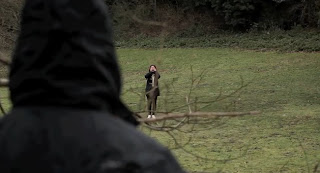Who are your audience and how did you attract/address them?
Our target audience are teenagers, both male and female, aged 16-25 so that we can attract a broad audience. In order to attract this audience of both genders we used a relatable cast who are aged 17, Gareth and Lily. We found that through watching many horror films, the majority of the victims of the antagonist involved within the narrative are teenagers as this is more likely to attract the teenage audience.
During the research process, we interviewed some of our target audience so that we could gain information about what they found scary and what they did not. We found out that many of them felt safest in a place where there are lots of people surrounding them and they felt less safe in a place that was secluded from people and society. It is demonstrated in our film opening that we have listened to what they have said as we have set the opening in a park (a place where there are usually lots of people) and a woods (an isolated location).
Furthermore, by setting our film opening in woods we are also following the conventions of horror as this is a stereotypical setting for a horror film.
We also found that, when researching into our target audience, that they had a fear of the unknown. Therefore, by not revealing our protagonist to the audience in the opening of the film we are applying the research to the opening in order to engage our audience and build suspense.
Finally, we thought to make our characters more relatable for the teenage audience we would also use realistic costume. For example, by not obviously displaying designer and expensive clothes, it is not creating a specific representation of the characters and so all of the target audience will be able to relate to the characters and find the film opening more engaging.
By Melissa Owen






















